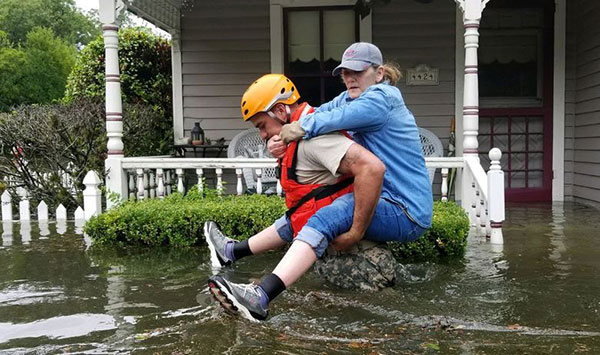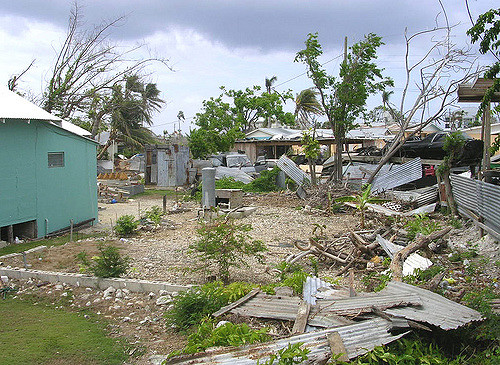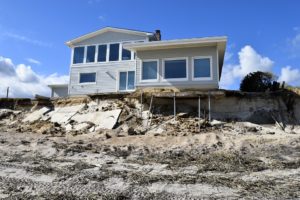Rebuilding your home after a destructive hurricane is not only expensive, but it’s emotionally draining. The best hope for victims of a hurricane is that they are covered with the appropriate Homeowners Insurance policy. A standard Homeowners Insurance policy does not cover flooding, but this peril commonly damages homes and businesses across the country. If you’d like to be prepared before a disaster strikes and add Flood Insurance or Business Property Insurance to your policy, speak with an AIS Insurance Specialist today: (855) 919-4247.
We’ve compiled some tips on what to do to ensure your family’s safety after the hurricane passes. Homes often become danger zones, but we can’t always avoid revisiting and trying to recoup our losses. Here are some pointers on how to do this as safely as possible.
Regrouping with Family Members
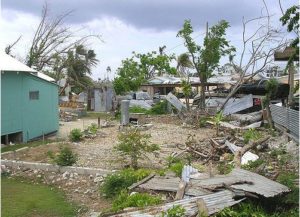 Hopefully, you have a plan in place to meet up with one another without needing cellular service, which may not be available during and after a hurricane. Water surges and strong winds can take down power lines so you may have a difficult time communicating with one another.
Hopefully, you have a plan in place to meet up with one another without needing cellular service, which may not be available during and after a hurricane. Water surges and strong winds can take down power lines so you may have a difficult time communicating with one another.
Home is often not the best destination to agree upon when picking a spot to meet. Not only will your home likely be flooded, but there may be gas leaks and wildlife taking refuge inside. You may get seriously hurt if you go in unprepared to deal with these sorts of possibilities.
Always have an out-of-town contact and provide every member of the family with that person’s address and phone number. If your area gets hit hard, the neighboring towns may still be safe to take refuge in. Make sure to be on your emergency contact’s list too, in case the storm hits there and they need to come to your home for safety.
Entering Your Home Again
Make sure that you are always staying current with the news and not attempting to re-enter your home before it’s deemed safe to do so. Roads leading to your home, or even the home itself, could be deadly so never defy the authorities in their safety assessments.
Tornadoes often follow hurricanes, so don’t be fooled into thinking that you’re safe going back after the hurricane winds die down. Wait until authorities say it is safe to return to your area. They will not do so until it’s clear that a tornado is not headed your way.
Before You Enter
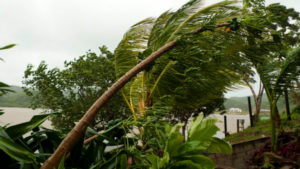 If you are allowed back, do not bring children with you. Your home may be very dangerous. It may also unsettle small children to see their house in a dilapidated state.
If you are allowed back, do not bring children with you. Your home may be very dangerous. It may also unsettle small children to see their house in a dilapidated state.
If there is serious structural damage, call local officials before entering. Also, immediately report hanging or damaged power lines to your local power company.
If the area surrounding your home is flooded, turn back around immediately. Even though flooding is covered under your Auto Insurance policy, you don’t want to get stuck in your vehicle. If the entrance to your home is flooded, don’t approach hoping that your car won’t get swept away or damaged by the flood.
Enter With Caution
Enter hesitantly and armed to confront wildlife taking refuge in your home. An animal may attack after becoming alarmed once you enter. Bring a broom or bear spray, which will work on just about any animal. Once inside, chances are that your utilities won’t work. Expect to find yourself without water, gas, electricity and phone service. This will be the condition of your home for quite a while, especially if the hurricane was especially severe. The food in your fridge will likely have spoiled if you didn’t empty your fridge before leaving home.
Do not drink any of the water from your pipes. It usually takes a few days for the authorities to declare whether or not the water is contaminated or potable. Do not take any chances; contamination with sewage water is quite common after a flood.
Bring battery-operated, heavy-duty flashlights because you will most likely not have electricity. Do not use candles in case there is a gas or propane leak. The best thing you can do is photograph the wreckage, which will be hard to capture if it’s dark inside. You’ll need these photographs for your Homeowners Insurance claim, which you will file for the cost of rebuilding your home. Prepare a list of damaged items for your records to accompany your photographs.
Rebuilding Your Life Starts Now
Remember that Homeowners Insurance doesn’t cover the value of a home, only the rebuilding costs to make the dwelling habitable again. Until you can move back in, make sure to keep all your receipts because you may be covered for relocation costs and similar expenses, sometimes even meals. Most Homeowners Insurance policies cover emergency housing.
After you notify your insurance company of the damage to your home, they will send you claim forms with a deadline (this length of time varies according to state). You’ll need to fill out and return the forms immediately. If you find the paperwork confusing, contact an AIS Insurance Specialist: (855) 919-4247.
Remember that the future is still full of potential. Think about the construction of your current home and consider building a stronger structure next time if it did not sustain heavy winds. If you didn’t have Flood Insurance during this storm, you probably paid heavily for it. Just don’t make the same mistake twice! To update your policy, speak with an AIS Insurance Specialist today.
The information in this article was obtained from various sources. This content is offered for educational purposes only and does not represent contractual agreements, nor is it intended to replace manuals or instructions provided by the manufacturer or the advice of a qualified professional. The definitions, terms, and coverage in a given policy may be different than those suggested here and such policy will be governed by the language contained therein. No warranty or appropriateness for a specific purpose is expressed or implied.
